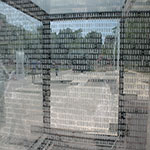Euroacademia Conferences
 Europe Inside-Out: Europe and Europeanness Exposed to Plural Observers (9th Edition) April 24 - 25, 2020
Europe Inside-Out: Europe and Europeanness Exposed to Plural Observers (9th Edition) April 24 - 25, 2020 Identities and Identifications: Politicized Uses of Collective Identities (9th Edition) June 12 - 13, 2020
Identities and Identifications: Politicized Uses of Collective Identities (9th Edition) June 12 - 13, 2020 8th Forum of Critical Studies: Asking Big Questions Again January 24 - 25, 2020
8th Forum of Critical Studies: Asking Big Questions Again January 24 - 25, 2020 Re-Inventing Eastern Europe (7th Edition) December 13 - 14, 2019
Re-Inventing Eastern Europe (7th Edition) December 13 - 14, 2019 The European Union and the Politicization of Europe (8th Edition) October 25 - 26, 2019
The European Union and the Politicization of Europe (8th Edition) October 25 - 26, 2019 Identities and Identifications: Politicized Uses of Collective Identities (8th Edition) June 28 - 29, 2019
Identities and Identifications: Politicized Uses of Collective Identities (8th Edition) June 28 - 29, 2019 The European Union and the Politicization of Europe (7th Edition) January 25 - 26, 2019
The European Union and the Politicization of Europe (7th Edition) January 25 - 26, 2019 7th Forum of Critical Studies: Asking Big Questions Again November 23 - 24, 2018
7th Forum of Critical Studies: Asking Big Questions Again November 23 - 24, 2018 Europe Inside-Out: Europe and Europeanness Exposed to Plural Observers (8th Edition) September 28 - 30, 2018
Europe Inside-Out: Europe and Europeanness Exposed to Plural Observers (8th Edition) September 28 - 30, 2018 Identities and Identifications: Politicized Uses of Collective Identities (7th Edition) June 14 - 15, 2018
Identities and Identifications: Politicized Uses of Collective Identities (7th Edition) June 14 - 15, 2018
“Wassup in Lisbon?” – Urban Art as City Marketing
-
-

-
Presentation speakers
- Daniela V. de Freitas Simões, Art History Institute – FCSH - University NOVA of Lisbon, Portugal
Abstract:
When we think of Barcelona, we think of the outstanding Public Art program. When we think of Bilbao, we think of the precious urban and architectural oeuvres. Sydney has the Opera House. Paris has the Eiffel Tower. So on and so forth. As long as travelling has become affordable and fast, the tourism industry established a quite competitive market for cities worldwide. On the other hand, globalization allows us to be established and working in any part of the world. Therefore, municipalities battle themselves to present their cities as multi-faceted as possible: for tourism, for culture, to work and live. City-branding, a term we’ve come accustomed to since the so called Bilbao effect, is one aspect of these strategies. And so is city marketing which assumes a broader spectrum once it tackles with more sociological, political and financial aspects. For the last two years, the GAU – Office for Urban Art – a part of Lisbon’s municipality has engaged or cooperated in several campaigns to promote urban art. There has been given a particular focus to Graffiti and Street Art and their role in the construction of the city’s image as well as their inter-action with the public – or the citizen – in a broader scope, detaching the artistic practice from social issues or community murals. This paper objectives an extensive analysis of GAU’s involvement with these artistic practices according to two vectors: the promotion of non curated or spontaneous urban art as legalized and validated artistic practices; and, on the other hand, the marketing strategies to promote the city as a hub or a laboratory for artists and even, tourists.
-
Related Presentations

Collective Memory, Identity and Inter-Group Conflict
- Pinar Kadioglu
- Alexander Griffiths

















